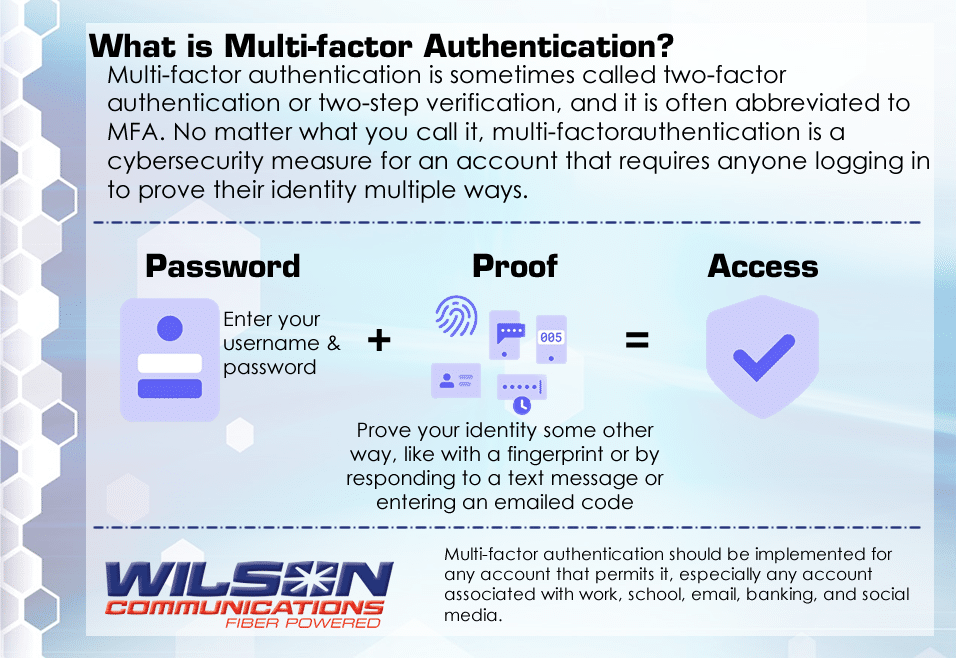Multifactor Authentication

What is Multi-Factor Authentication?
Multi-factor authentication allows you to protect yourself in multiple ways. Wouldn’t it be nice if you could protect your password with another password? Multi-factor authentication gives you this power – think of it like placing your housekeys in a safety deposit box that can only be opened by a facial scan. In some cases, this metaphor isn’t far off from reality. Multi-factor authentication is sometimes called two-factor authentication or two-step verification, and it is often abbreviated to MFA. No matter what you call it, multi-factor authentication is a cybersecurity measure for an account that requires anyone logging in to prove their identity multiple ways. Typically, you will enter your username, password, and then prove your identity some other way, like with a fingerprint or by responding to a text message.
Why go through all this trouble? Because multi-factor authentication makes it extremely hard for hackers to access your online accounts, even if they know your password.
It might seem like a lot of work, but once you have multi-factor authentication set up, proving your identity usually adds just a second or two to the log-in process. And the peace of mind multi-factor authentication provides is well worth it.
We recommend that you implement multi-factor authentication for any account that permits it, especially any account associated with work, school, email, banking, and social media.